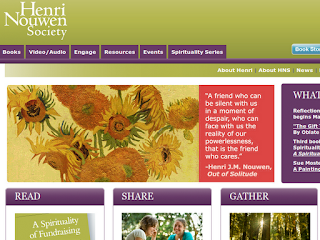A conference is underway as I write, a conference with a difference. The whole affair is very refreshing and encouraging and exciting.
It brings together influential scientists, theologians and philosophers to discuss the nature of science and faith, and focusses on the Big Bang theory and the discovery of the Higgs boson.
The conference is being held in Switzerland and is called 'The Big Bang and the interfaces of knowledge: towards a common language?' The aim is to explore questions around the interface between science and faith and whether a common framework of knowledge might be possible.
You can download the programme as a PDF file (165 kB) or read brief details online from the website of the organisers, Wilton Park in collaboration with CERN in Geneva. There's also a very useful BBC News article about the conference 'Big Bang and religion mixed in Cern debate'.
Here's the introduction from the full programme...
The Big Bang theory is the prevailing cosmological model for explaining the genesis of the universe. To date it has the wide support of the scientific community because if offers the most accurate and comprehensive explanation for a broad range of observations. It leads to a dating of the universe as 13.7 billion years old.
The purpose of this conference is to enable scientists from a range of disciplines to dialogue with philosophers and theologians from the world religions about the nature of the Big Bang Theory. What understandings might scientists and theologians share in common? How are their paradigms shaped and developed? Is it possible to develop a common framework or language?
Why is this conference so exciting? Simply because it's an unusual opportunity to discuss and (perhaps) reconcile views that are often perceived to be irreconcilable. And it's exciting because the conference involves experts who would rarely meet together. When a record of the meeting becomes available it will make very interesting reading and should spark further debate in the wider community.
We might borrow the words of Pontius Pilate and simply describe the topic of this meeting as 'What is truth?' Pilate was caught in a dilemma between religion and politics. The dilemma this meeting is discussing is quite different - it's examining two different kinds of truth.
How do you see the debate? Is it possible for science and faith to agree about anything at all? Are the two views truly irreconcilable or do they actually threaten one another? Is there an unbridgeable gulf between the two?
See also
- Relationship between religion and science - Wikipedia, undated - Encyclopaedic article on the topic with further references.
- Science and faith archive - Patheos, undated - A collection of links and book titles on the topic, updated from time to time.
- Science and faith - again - Journeys of heart and mind, 22nd August 2012 - How do science and faith stack up against one another as ways of knowing the truth? Science provides truth about the physical universe while faith provides truth about spiritual things. Is there any overlap?
- Science and faith - Journeys of heart and mind, 7th January 2012 - Can I have faith and accept science too? Is that an unreasonable position to hold? Recent discussions on Jesus Creed have provoked me to write on this topic again.
- Science and faith - war or peace? - Journeys of heart and mind, 25th April 2010 - The origin of the universe, the origin of life, evolution - these are some of the topics that seem to be endlessly debated across the science/faith divide. Why does this happen, what are the root causes of the sometimes strongly-worded arguments? Perhaps it's time to take a fresh look.
- Science and faith: The conflict - The Telegraph, 16th March 2009 - A new film opening at the Cambridge Science Festival this evening attempts to demonstrate that the divide between religion and science is not as great as it has been portrayed.







